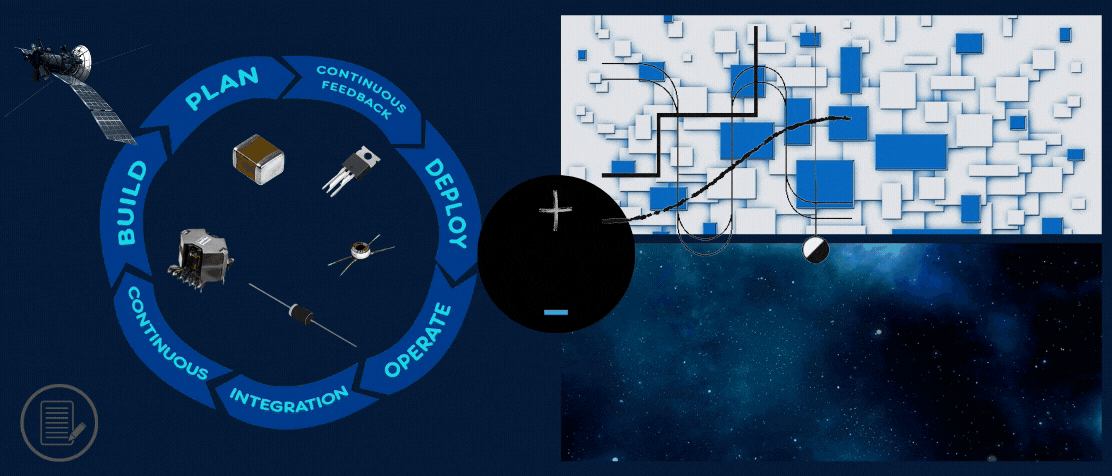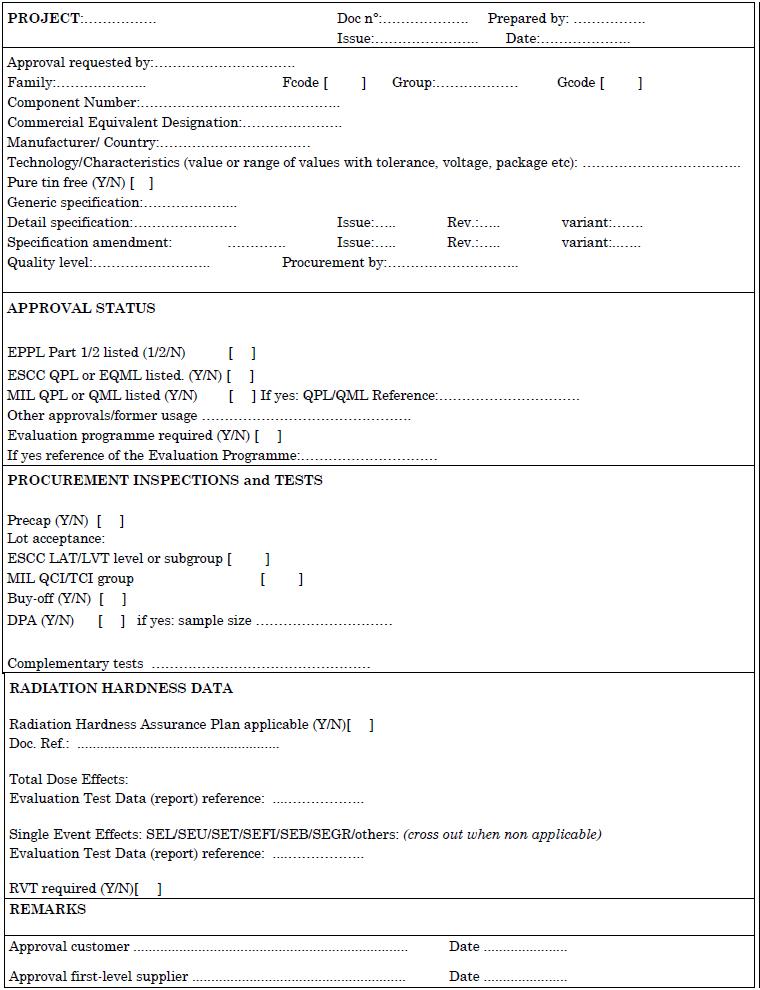
Parts Approval Document (PAD). EEE components testing.
- Posted by Juanjo Medina
- On May 7, 2020
- 0
Parts Approval Document (PAD) is a control paper whose purpose is to identify unequivocally the component and to provide information about its evaluation and its acceptability regarding:
- Approval Status.
- Applicable documentation.
- Evaluation Tests.
- Procurement inspections and tests.
- Lot acceptance or lot verification test.
- Radiation hardness data and RVT.
Depending on the qualification of the component, the need for a PAD is as follows:
- For space-qualified parts a PAD is required when:
- Additional controls as precap, buy-off, LAT or LVT, RVT, DPA are necessary.
- The foreseen future usage can overcome the specified limits and additional test become mandatory.
- Pure tin is used inside or outside the part. In the case of pure tin parts, and depending on the project, NCR or additional documents could be necessary.
- For another type of part, a PAD is required. All non-qualified components are subjected to pass the mentioned tests to certify their reliability.
When agreed at the project level, only ESCC/MIL qualified components with no additional tests or not involved in radiation hardness improvements/changes can be approved directly just with its inclusion in the Declared Component List (DCL)
Normally every single component requires its own PAD but, with justification, a single PAD may be generic to cover different part ranges of same family and group, i. e., a family of resistors with a wide range of values.
The Parts Approval Document is a technical sheet for the procurement of the components and needs the signature of the customer and supplier for approval.
The ECSS-Q-ST-60C_rev.2 (21 October 2013) standard provides a PAD sheet format to be used as a template for the necessary data and test results recollection during the different assessments performed on each component. It can be seen here below.
Where each field must cover the following information:
- Doc No: Unique sequential number. g. ABCD-YYY-PAD-ATN-009.
- Issue: Issue of a document. E.g. issue 1.
- Date: Date of issue.
- Project: Name of Project, e.g. XXX. Could also be included a Line-Item-Nº field using the component code, e.g. XXXC12222ARUB00.
- Prepared by: Name of the person submitting the PAD.
- Approval requested by Name of the company submitting the PAD. E.g. Alter Technology TÜV NORD.
- Family: Capacitor, resistor, etc. (Refer ECSS Family Code). E.g. Transistors F-code 12. Could also appear the Group of the family with its code. E.g. Low Power, NPN (<2Watts) Gcode 01.
- Group: Ceramic, tantalum, etc. (Refer ECSS Group Code).
- Component Number: In accordance with the procurement specification, e.g. 520100211R. May be generic to cover different range of parts (with justification)): e.g.: a range of resistors: 4001027******.
- Commercial Equivalent Designation: Self-explanatory. g. 2N2222ARUBG LCC-4 (UB).
- Technology/Characteristics: Additional details of the component covered by the PAD. E.g. Transistors Low Power NPN, based on type 2N2222A. May also be found a Package field, e.g. LCC-4.
- Pure tin free (Y/N): When tin ≥ 97% (inside the component and terminations).
- Generic specification: Relevant specification. E.g. ESCC 5000.
- Detail specification: Relevant specification with issue and revisions only required for non-qualified parts. E.g. ESCC 5201/002.
- Specification Amendment: Relevant specification with issue and revisions, if applicable.
- Quality level: As defined in ECSS-Q-ST-60C_rev.2 (21 October 2013), chapter 7. It defines the component reliability and will depend on the requirements for future usage and the Specifications with which are assessed. g.: ESCC, JANS, ESCC B, QML V, etc.
- Procurement by: Identify the name of the company procuring the part. This can be self, CPPA, distributor, manufacturer or combination thereof. E.g. Alter Technology TÜV NORD.
- Manufacturer/Country: Self-explanatory.
- Approval Status: Information about known approvals (EPPL, ESCC, ESCC/QMIL, MIL, MIL/QMIL or other approvals/former usage). Y/N as applicable. May also be included a field for QPL/QML reference.
- Evaluation programme required: Y/N as applicable. May also be included a field for the programme reference.
- Procurement inspection and test: Precap, Buy-off, DPA, other LAT. Y/N as applicable.
- DPA sample size: Number, e.g. 0, 3…
- Complementary tests: Testing/Inspection in addition to that defined in the procurement specification shall be identified, e.g. PIND, up screening…
- Lot Acceptance: Identify ESCC LAT/LVT LAT level and subgroups.
- Radiation Hardness Data: Self-explanatory.
- Radiation Hardness Assurance Plan applicable: Y/N as applicable.
- Ref.: Reference of the Radiation Hardness Assurance Plan.
- Total Dose Effects and data report reference: Y/N as applicable, value (e.g. 100 Krads (Si) LDR) and Evaluation Test Data (report) ref. (RHA).
- Single Event Effects: SEL/SEU/SET/SEFI/SEB/SEGR/others and data report reference: Y/N as applicable, value and Evaluation Test Data (report) ref. for Single Event Latchup/Single Event Upset/Single Event Transient/Single Event Functional Interrupt/Single Event Burn out/Single Event Gate Rupture.
- RVT: Radiation Verification Test Y/N as applicable.
- Remarks: Any additional information.
- Approval customer: Signature signifies acceptance.
- Approval first-level supplier: Signature signifies acceptance.

- Radiation Sensitive Technologies and EEE Parts - September 28, 2020
- Declared Component List. EEE Components for Space. - May 7, 2020
- Parts Approval Document (PAD). EEE components testing. - May 7, 2020



0 comments on Parts Approval Document (PAD). EEE components testing.